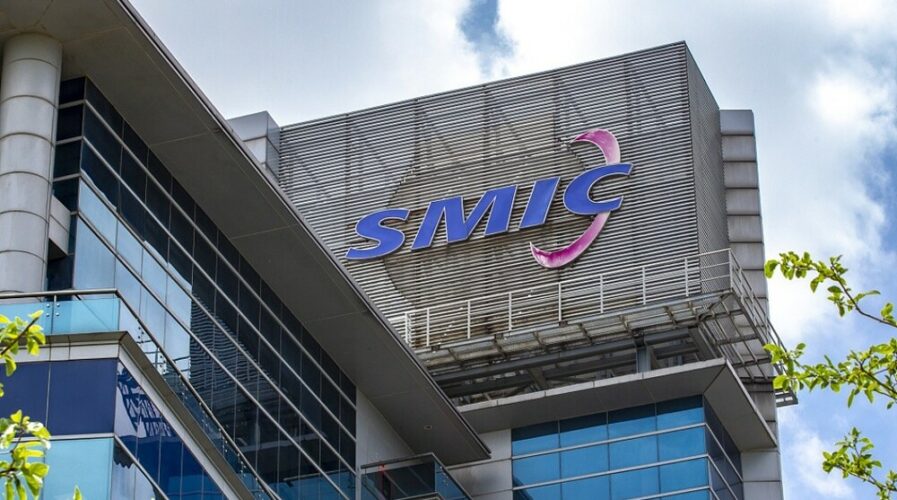
Despite US sanctions hurting revenue in 2023, SMIC remains resilient, forging ahead with 5nm node development.
SMIC defying US sanctions with 5nm innovation and Huawei alliance
- Despite US sanctions hurting revenue in 2023, SMIC remains resilient, forging ahead with 5nm node development.
- SMIC ramps up Huawei collaboration, launching a dedicated 5nm chip production line in Shanghai for future flagship smartphones.
- Can the US push its restrictions any further – and could they even be effective?
Semiconductor Manufacturing International Corporation (SMIC) is China’s premier advanced semiconductor foundry. Despite facing tumultuous trade winds that have buffeted the Chinese chip industry in recent years, SMIC has remained undeterred. Confronted with crippling sanctions aimed at stifling its capabilities by limiting access to crucial tools and expertise, it has responded with a display of resilience.
Investing substantially in homegrown innovation, SMIC has showcased its capacity to thrive independently. So much so that experts have begun to acknowledge the limitations of US sanctions in crippling the Chinese chip giant, and it is evident that SMIC’s trajectory remains unwaveringly upward. In a recent DigiTimes article, Robert Castellano, president of The Information Network, highlighted the pivotal roles played by SMIC and Huawei in Beijing’s response to US sanctions, citing them as significant beneficiaries of local semiconductor industry subsidy policies.
Castellano emphasized that both companies have emerged as crucial participants in China’s efforts to counteract the impact of sanctions, underscoring their strategic significance in the nation’s semiconductor landscape. “Projects, such as the expansion of Huawei’s Shanghai Qingpu R&D base and SMIC’s 12-inch wafer fab, have been listed as key investment projects,” DigiTimes noted.
In the face of formidable US trade sanctions and technology export restrictions, the Chinese semiconductor foundry has not only weathered the storm with minimal revenue impact but is also boldly expanding its 12-inch wafer production lines. Moreover, the proportion of revenue from SMIC’s 12-inch wafer production has increased from 64.4% in the fourth quarter of 2022 to 74.2% in the same period of 2023, an increase of nearly 10%.
For context, in the final quarter of 2023, SMIC International witnessed a notable surge in revenue, soaring by over 3.5% to surpass the US$1.678 billion mark, marking the sole quarter of revenue growth throughout the previous year. However, despite surpassing revenue projections, a substantial decline in gross margin resulted in a steep decline of net profit by 54.7%, plummeting to approximately US$175 million.

A Kirin chip in the new Huawei Mate 60 Pro smartphone demonstrates China’s semiconductor industry progress. (Photo by Rebecca BAILEY/AFP).
Regarding the drop in net profit, SMIC attributed it to several factors, such as the industry downturn, low market demand, high industry inventory, and intense competition among competitors. These factors led to lower capacity usage and fewer wafer shipments for the company. Moreover, SMIC invested heavily during the reporting period, resulting in higher depreciation expenses than the previous year.
As a result, SMIC predicts a 2% increase in revenue for the first quarter of 2024 compared to the previous quarter, totaling around US$1.71 billion. This surpasses the market’s anticipated revenue of US$1.67 billion, indicating that the US sanctions have not significantly affected the company’s revenue, according to the article by DigiTimes.
The US is not stopping SMIC & Huawei
Last year, SMIC gained international attention when analysts revealed the company’s involvement in helping Huawei to develop highly advanced domestically produced chips in China. SMIC’s swift capacity expansion has also attracted considerable notice. In 2023, the company’s capital expenditure reached US$7.47 billion, marking a 17.6% increase from 2022.
However, SMIC recently announced that it anticipates capital expenditure to remain relatively unchanged compared to last year. Yet, SMIC is advancing steadily in developing advanced 7nm and 5nm nodes, which Huawei has selected for its mobile processors and AI-centric Ascend series. Progress on both nodes remains smooth, promising enhanced performance for Huawei’s Kirin mobile chips and Ascend GPUs.
There are indications that SMIC’s 5nm chips could be ready for deployment this year, further closing the gap between China’s semiconductor industry and Western fabs. While SMIC is also eyeing advancements in 3nm technology, it’s likely at least a year away from fruition, if not longer, according to various reports.
READ MORE
- Safer Automation: How Sophic and Firmus Succeeded in Malaysia with MDEC’s Support
- Privilege granted, not gained: Intelligent authorization for enhanced infrastructure productivity
- Low-Code produces the Proof-of-Possibilities
- New Wearables Enable Staff to Work Faster and Safer
- Experts weigh in on Oracle’s departure from adland


